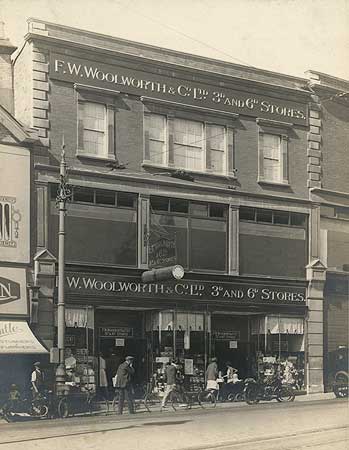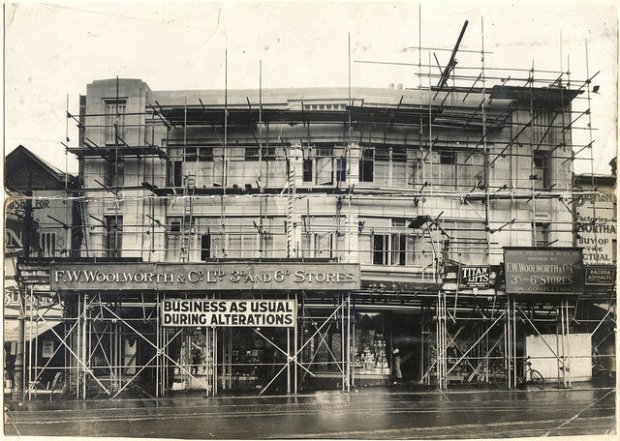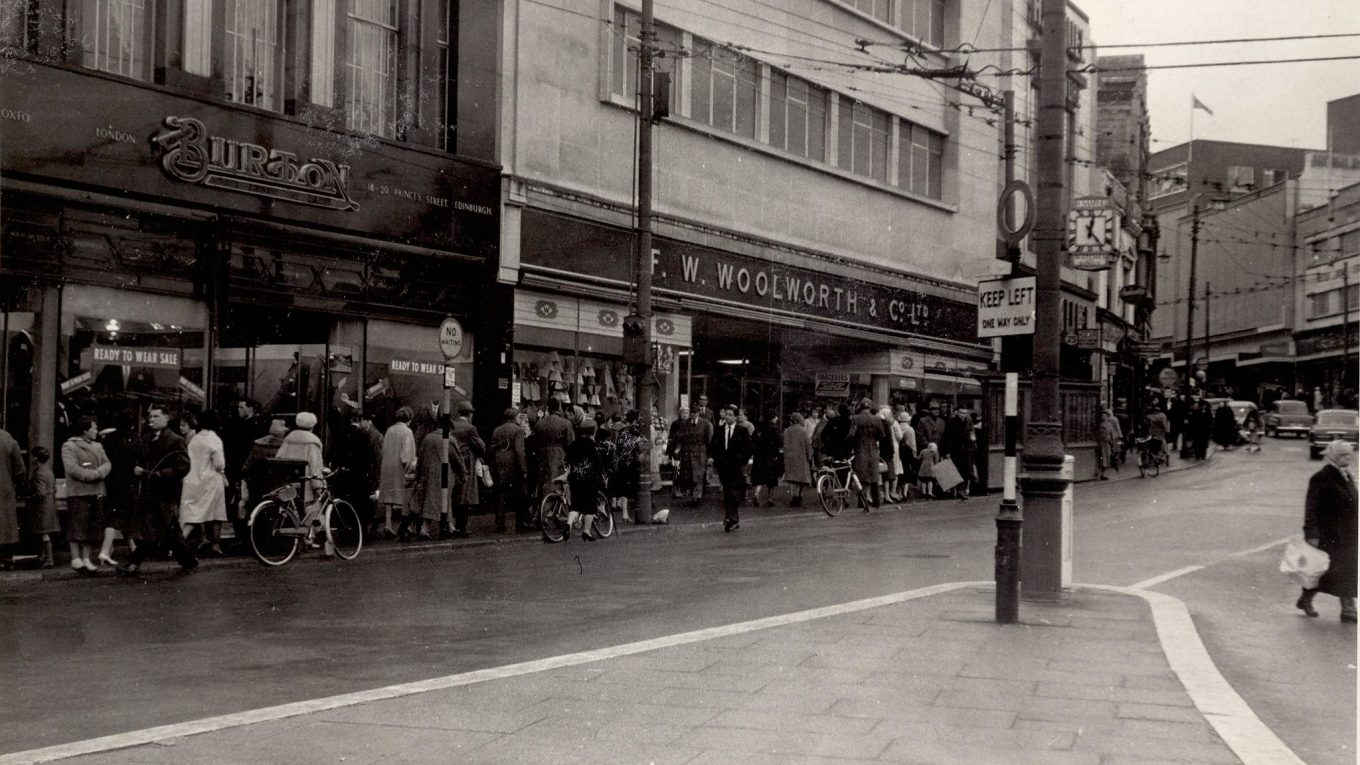For what it’s Wool “Worth”.
A brief History of Bournemouth Woolworth’s.
On the 26th of November in 2008, Woolworth’s shocked the UK by announcing it had entered administration, meaning it’s trading was suspended and all 807 stores with around twenty seven thousand jobs lost. The loss of such a cherished store was felt by all, I interviewed an avid customer of Woolworth’s who had been shopping at the company at various different times in her life who described it as:
Like losing a family Member
Alison Todd (Woolworths customer)
The Bournemouth store was not one of the many stores to close upon the company’s administration announcement as it had already closed many years before that in 1983 where it was sold to Boots and is still a Boots store to this day as pictured below.

The store begun it’s life on 18 commercial road in Bournemouth square in 1915, six years following the opening of the first British Woolworth’s store in 1909.

The Woolworth’s got off to a good start, Sylvia Winter was a member of staff of the store during the 1930’s reminisced “Woolworth’s was very popular. We worked from 8.30am to 7pm and 9pm on Saturday’s and we did a tremendous trade. Everything was priced at 3d or 6d if it was a do-it-yourself thing it would be a 6d a part”.

I believe that a good penny and sixpence store, run by a live Yankee, would be a sensation here.
Frank Woolworth
However, in 1941 crisis struck in the form of an incendiary bomb dropped from a German plane during an air raid. Information taken from the Official Civil Defense Records explained that during the 10th-11th of April at around midnight bombs were dropped in the square area. Woolworth’s suffered two direct hits and the whole premises was gutted following a huge fire. A total of 112 buildings were damaged in the raid and sadly seven women and one man were also killed.

It was more than a decade before the store was rebuilt following the bombings. Portland stone lined the structure for more protection. The new store was huge by 1950’s standards, two large staircases at either end with a cafe on the top floor and a photo booth on the bottom floor.

Woolworth’s as a company in the Dorset area would expand even more with a new store opening in Westbourne. The opening of this store was covered by Bournemouth Echo and described as a “new self-service style” store. This kind of store was extremely modern as self service was still not widely introduced, Woolworth’s were entering the modern era of Retail. The store was just the second store of its variant in England.
Bournemouth Echo reported on the new style of store, explaining:
“The usual pattern of self-service stores will be followed – so that customers will pick up a wire basket just inside the store, wander round taking the goods they need, and leaving the store through the check-out points, where goods will be paid for in total.”
Bournemouth Echo (1955)
During the 1960’s Woolworth’s expanded further, introducing so called out of town stores, that they would named Woolco. One of these new stores begun its life at the Hampshire Centre in 1968, which is now Castlepoint. The majority of these stores would trade until the 1980’s, where they turned into gateway hypermarkets and eventually bought by Asda.
Sadly, Bournemouth’s Woolworth’s met it’s timely demise when it was sold to Boots in 1981 for five million pounds. Bournemouth echo contacted a Woolworth’s spokesperson who said:
“It makes a profit but not a sufficient profit for its asset value.”
Woolworth’s Spokesperson
The final phase of Poole’s Arndale Centre in 1982 was supposed to be including Woolworth’s, but the company chose to step away from the initial plan and remain firmly planted on the high street. Woolworth’s as a company was generational, it was a staple for everyday essentials and those smaller luxuries that we all enjoyed, Alison Todd of whom I interviewed about Woolworth’s would use the store for many reasons, one of those was to get the latest music. Music sales the company heavily relied on. VHS, CD and later DVD’S.
However, a tidal wave of new trends would sweep across the nation, and Woolworth’s felt the pressure. Online competition rapidly pushed the CD industry into a thing of the past, ultimately cutting loose from the Kingfisher Group that had previously owned it, Woolworth’s became independent, which took its toll. The toll came in the form of of a 2008 announcement of almost 100 million pre-tax lost which fell the business into crisis. A restructuring specialist famously attempted to purchase the company doe £1, this was turned down. The company went into administration later that year in November.
Ultimately, Woolworth’s failed for a number of reasons, people suggest that poor management, not been able to keep up with a quickly evolving retail market, the circling discount stores and poor customer offering contributed to the company’s demise. Whatever the reasons, the store’s loss left a massive impression on the British public, and made clear the ruthless nature of the retail world.
Sources:
http://www.jp137.com/lts/Bournemouth.Air.Raids.pdf
http://news.bbc.co.uk/1/hi/7811187.stm
https://wooliesbuildings.wordpress.com/2018/05/21/bournemouth-store-54/
https://www.bournemouthecho.co.uk/news/17291122.pictures-woolworths-decades/
Further Reading:
Woolworth’s: 100 Years on the High Street – Katheryn Morrison (Book)
From Family history to Community History – W.T.R. Pryce (book)
The Consumer Society Myths and Structures – Jean Baudrillard (Book)
The Rise of Consumer Society in Britain 1880-1990 – John Benson (Book)

